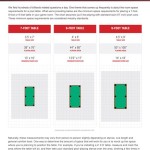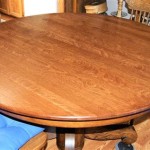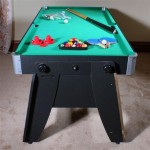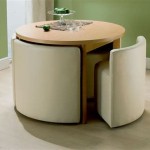Understanding the 3-Way Table Lamp Switch
The 3-way table lamp switch is a common component found in many household lighting fixtures. Its primary function allows for the control of a lamp's brightness levels in three distinct increments, offering versatility in setting the desired ambiance. This functionality is achieved through a specialized wiring configuration involving the switch, the bulb, and the power source. Understanding the underlying principles of its operation and construction is crucial for both electrical novices and experienced individuals involved in lamp repair or design.
The complexity of a 3-way switch surpasses that of a standard on/off switch, requiring a deeper understanding of electrical circuits. It is essential to distinguish between the functionality and wiring of a 3-way lamp switch versus a standard 3-way switch used in residential lighting applications for controlling a single light fixture from two separate locations. While both may share the "3-way" designation, they operate on different principles and are not interchangeable. This article will focus on the specific type of 3-way switch employed in table lamps.
A 3-way table lamp switch incorporates a rotary mechanism that sequences through different contact configurations with each turn of the switch knob. This sequence typically includes: Off, Low intensity, High intensity, and Both Low and High intensity combined (for maximum brightness). This stepped brightness control allows users to tailor the light output to suit the specific needs of the environment, ranging from dim accent lighting to brighter task lighting. The switch itself is a relatively compact device, designed to fit within the base of the lamp and withstand repeated use.
Key Point 1: The Internal Components and Mechanism
The internal construction of a 3-way table lamp switch is more sophisticated than that of a standard single-pole switch. At its core, it features a rotating cam or disc that makes and breaks contact with multiple terminals. These terminals are connected to different filaments within a 3-way bulb, allowing for various lighting configurations. The switch casing is typically made of a durable, non-conductive material, such as plastic or bakelite, to ensure user safety. Inside the casing are the internal metallic contacts, typically made of brass or another conductive metal, which provide the electrical pathways for the current to flow.
The rotating mechanism of the switch is crucial to its operation. Each rotation of the switch knob aligns the internal cam or disc with a different set of contacts, thereby activating different filaments in the bulb or cutting off the power entirely. The precise arrangement of these contacts determines the sequence of brightness levels. A spring-loaded detent mechanism ensures that the switch remains in the selected position until it is manually rotated again. This provides a tactile feedback to the user, confirming that the switch has transitioned to a new setting.
The number and configuration of the terminals on a 3-way table lamp switch are specifically designed to work with a 3-way bulb. These switches typically have four terminals. One is for the incoming power or “hot” wire, one is for the neutral wire, and the remaining two are used to control the individual filaments within the 3-way bulb. The wiring scheme must be carefully followed to ensure proper operation and prevent damage to the switch or the bulb.
It is important to note that the quality of the internal components can directly affect the lifespan and reliability of the switch. Cheaply made switches are prone to failure due to worn contacts, broken detents, or cracked casings. Investing in a higher-quality switch can significantly extend the life of the lamp and improve its overall performance.
Key Point 2: The 3-Way Bulb and its Role
The 3-way bulb is an integral part of the 3-way lighting system. Unlike standard bulbs that have a single filament, a 3-way bulb contains two separate filaments, each with a different wattage rating. These filaments are independently controlled by the 3-way switch, allowing for three different levels of light output. Typically, the first setting activates the lower-wattage filament, producing a dim light. The second setting activates the higher-wattage filament, providing a brighter light. The third setting activates both filaments simultaneously, resulting in the maximum light output.
The base of a 3-way bulb is slightly different from a standard bulb. It has an additional contact point that connects to the second filament. This contact point ensures that the switch can independently control each filament. It's crucial to use a 3-way bulb with a 3-way lamp switch for the system to function correctly. Using a standard bulb in a lamp designed for a 3-way bulb will only result in the lamp turning on and off with each click of the switch.
The wattage ratings of the two filaments in a 3-way bulb are typically specified on the bulb itself. Common wattage combinations include 50/100/150 watts or 40/60/100 watts. It is important to select a 3-way bulb with wattage ratings that are appropriate for the lamp and the intended use. Exceeding the maximum wattage rating specified by the lamp manufacturer can pose a fire hazard.
When troubleshooting a 3-way lamp, it is always recommended to first check the bulb. A burned-out filament in the 3-way bulb is a common cause of malfunction. Also, ensure the bulb is correctly seated in the socket. Loose connections can prevent the switch from properly controlling the filaments.
Key Point 3: Wiring and Troubleshooting
Wiring a 3-way table lamp switch requires careful attention to detail. Incorrect wiring can result in the switch not functioning properly, or in more severe cases, can create a safety hazard. Therefore, de-energizing the lamp by unplugging it from the power outlet is the first and most important step before undertaking any wiring work. When replacing a switch, it's extremely helpful to take a photograph of the existing wiring configuration before disconnecting the old switch to guide the re-wiring process.
Typically, the black wire (hot) from the power cord is connected to the terminal on the switch that is designated for the incoming power. The white wire (neutral) from the power cord is connected directly to the lamp socket. The two remaining terminals on the switch are connected to the two wires that run to the lamp socket, each controlling one of the filaments in the 3-way bulb. These two wires may be different colors, such as red and black, or may be marked in some other way to distinguish them. It is imperative to consult a wiring diagram or a qualified electrician if there is any uncertainty about the correct wiring configuration.
One common problem encountered with 3-way table lamps is that the switch stops working completely or only works in certain positions. This can be caused by a faulty switch, a burned-out bulb, or a loose connection. To troubleshoot the problem, first check the bulb to make sure that neither filament is burned out. If the bulb is good, then the next step is to inspect the wiring for any loose connections or frayed wires. If all the connections appear to be secure, then the switch itself may be defective and need to be replaced.
When replacing a 3-way table lamp switch, it is essential to select a replacement switch that is rated for the appropriate voltage and current. Most table lamps operate on standard 120-volt AC power, but it is still important to verify the voltage rating of the existing switch before purchasing a replacement. The current rating is typically expressed in amperes (amps). Using a switch with an insufficient current rating can lead to overheating and potential fire hazard.
Finally, always test the lamp after making any repairs or modifications. Before plugging the lamp back into the power outlet, carefully inspect all the wiring to ensure that there are no exposed wires or loose connections. Then, plug the lamp in and test each of the switch positions to make sure that the bulb lights up correctly at each level. If the lamp does not function properly, immediately unplug it and re-check the wiring.

Vintage Hurricane Lamp Milk Glass 3 Way Switch Night Light Table Ebay

Install A 3 Way Lamp Switch Dadand Com

Chorale Metal Table Lamp With Touch 3 Way Dimmer Switch 18x33 Cm

Yansun 17 In Chrome Led Integrated Table Lamp With 3 Way Dimmer Rotary Switch And Dual Usb Charging Ports H Dl013 The Home

Yansun 17 In Chrome Led Integrated Table Lamp With 3 Way Dimmer Rotary Switch And Dual Usb Charging Ports H Dl013 The Home

30 Inch Table Lamp 3 Way Switch Empire Shade Green And Brown Finish Bm304969

20 White Classic 3 Way Switch Table Lamp Walmart Com

Chorale Metal Table Lamp With Touch 3 Way Dimmer Switch 18x33 Cm

Convert Any Existing 3 Way Lamp To A Smart And Still Use The Original Switch

White Marble Table Lamp For Bedroom Pull Chain Switch 3 Way Dimmable Linen Shade Gold Metal Pole Small Nightstand Lamps 18 5 Inches








